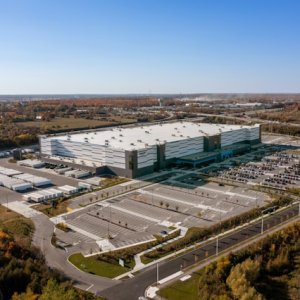Expansion Across North and Central Mexico

STORY INLINE POST
Q: How has American Industries grown its project portfolio in the real-estate and sheltering markets?
A: We have grown in terms of real estate and new shelter administrative services projects in most of the regions where we operate. These regions include Jalisco, Guanajuato, Queretaro, San Luis Potosi, Nuevo Leon, Ciudad Juarez and Chihuahua. Regarding our real estate offering, we are growing between 50,000m2 and 70,000m2 in leased area per year, mainly in Guadalajara, Queretaro, Ciudad Juarez, Monterrey and Chihuahua. We are closing between 10 and 12 projects per year and we expect to maintain this level of growth in 2018. Last year was challenging but we hope for more certainty starting in 2Q18. Regardless, we know projects cannot be stopped despite the uncertainty originated in the ongoing political-commercial environment.
Q: In which regions does American Industries expect to experience the most growth?
A: Markets that are not too dependent on the automotive industry will not be so sensitive to the uncertainty stemming from the NAFTA renegotiations. As a result, we expect more significant growth in regions such as northern Mexico and areas with greater diversification in the electronics or aerospace industries, such as Queretaro, Chihuahua, Ciudad Juarez and Guadalajara. In comparison, regions with a greater exposure to the automotive sector, such as Guanajuato, San Luis or Aguascalientes, will likely see slower development due to this uncertainty. At the moment, between 30 and 35 percent of our operations are related to the automotive industry but despite the uncertainty regarding trade, we will not change our long-term expectations for the industry.
Q: What should real-estate developers and shelters prioritize to promote investment in Mexico?
A: Having the most updated and accurate information is key to helping companies make a strategic projection of their costs in Mexico. American Industries has a Site Selection service where the company offers potential investors a cost-modeling service that measures the feasibility of their business in Mexico. Depending on the industry, one region may be better than another. For the automotive industry it varies. The most important factors to consider when identifying a new investment site are location of clients and suppliers, cost and availability of labor. These vary from region to region, generate variations in our costs modeling and impact projects depending on where companies choose to install their operations. The north, for example, was ideal for the production of harnesses 30 years ago but as labor costs rose, many harness companies started looking for locations in central and southern Mexico and in more remote northern areas. In this sense, companies that need more specialized labor and can pay higher salaries may be better placed in a city with a more expensive labor market that suits their specialization needs.
If a company works in a heavy industry and its products are largely destined for the US market, being closer to the border is a better option because the region is more competitive on US-oriented logistics. Comparatively, the Bajio region offers good opportunities to buy land at competitive prices. Finally, if companies depend on electronics and design areas, Guadalajara can be a better option.
Q: How can American Industries promote investment in less industrialized or nontraditionally automotive states?
A: Our clients usually look for places where competition for labor against established industries is not as hard. As industrial promoters, presenting location alternatives to clients is our job. American Industries is considering projects in Durango and Zacatecas. However, clients usually ask us for projects in those states instead of us offering them. Maybe, industrial promoters could be more proactive and propose areas where there is a need for employment sources to bring together demand and supply.
























